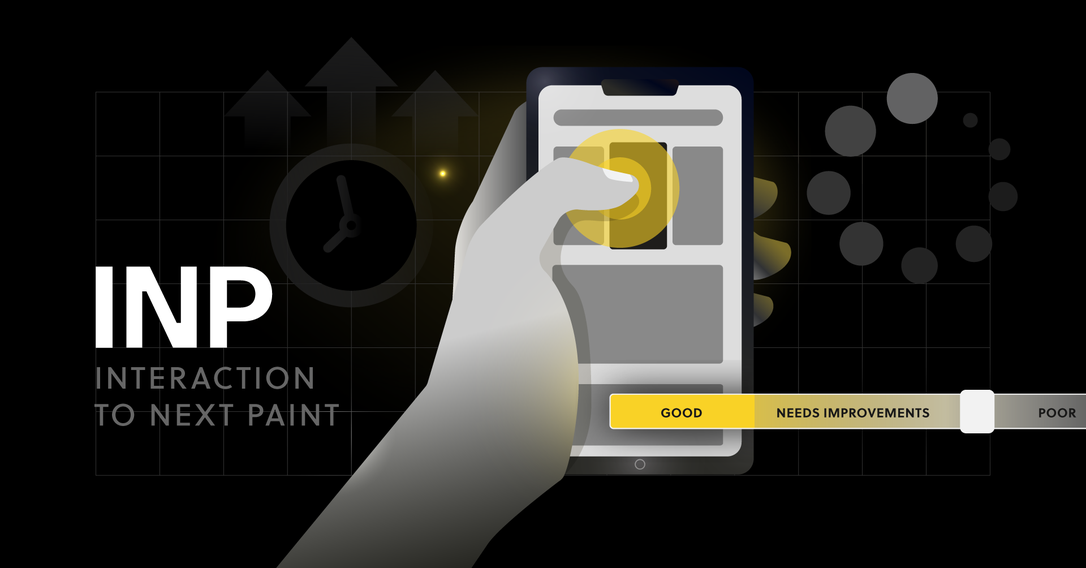7 min
October 22, 2025
What works in e-commerce?
It should be remembered that KPIs are not "pulled out of thin air" numbers, but measures and vectors whose direction, sense, and strength reflect the company's strategy. It's better to do more work upfront by conducting interviews with managers and employees than to invent indicators yourself that people won't identify with – Jarosław Trybuchowicz, Business Intelligence Analyst at Audioteka and speaker at the 3rd e-Commerce Congress, talks about Business Intelligence analytics at Audioteka, the data collected, the tools used, and the mistakes in selecting them and the appropriate indicators for measuring defined goals.
Listen to the audio version of this article.
FP20: You are responsible for Business Intelligence analytics at Audioteka. What does the analytics team/department look like at Audioteka? What exactly do you do?
Jarosław Trybuchowicz: Yes, I currently work mainly on analytics at Audioteka. In principle, using the word "department" is a great exaggeration. I do BI single-handedly. Of course, I cooperate with practically everyone in the company who can provide me with some data or expects answers to business questions. My role is partly to maintain and expand the BI system, and on the other hand, to provide substantive support and a "data base" for the production, sales, marketing, and management departments.
Mobile application, online store – is it easy to process data coming from various platforms and sources? What is the biggest challenge for you?
I like challenges, so if it were too easy, you would probably be talking to someone else right now. That's right, managing data at Audioteka is quite a challenge. We have transactional data, logs from the application, logs from the website, data from social networks, Google Analytics. Often this data is either incomplete or inconsistent. Hence, I spend a lot of time "cleaning" it. I am currently building a new database from scratch dedicated exclusively to analytics. This is my priority project for the coming quarter. Dealing with data and empirically finding gaps is essential to sealing the system. We have no influence on the quality of certain external data, and the quality of internal data often depends on the human factor. BI allows us to catch these errors. It is definitely worth keeping the data in-house, and if financial and human resources allow, building your own monitoring tools, especially in such specific businesses as Audioteka.
What tools do you use? Which ones are worth investing in?
For analytics, I use TIBCO Spotfire, Google Docs, MS Excel, GA [Google Analytics], and other SaaS tools. For data integration, I use Talend Open Studio. Of course, I also use databases: MS SQL and PostgreSQL. This set of tools is just one path that reflects our requirements and fits within the budget. There are many alternatives on the market, both for smaller companies with moderate requirements and for corporate clients.
In your opinion, is there a chance that 'analytical combines' will appear on the market, combining 4-5 tools and allowing for quick, real answers?
Certainly! There are already quite a few simple tools that offer possibilities that many people are not even aware of. Examples include SaaS BI programs that instantly connect to FB, GA, Twitter, Google Spreadsheets, etc., with dedicated connectors. The biggest problem in integrating different data sources is often the lack of standardization between them. Therefore, special attention should be paid to designing data sources and naming events on the website or marketing campaigns. In addition, there are many overlays or substitutes for popular products. E.g., Nanigans instead of Power Editor, MixPanel instead of Google Analytics.
Do analyses of traffic on websites and in applications always translate into the effectiveness of marketing activities? Does it sometimes happen that the campaign results are so surprising that you doubt whether such analyses make sense?
We do not always observe such a direct translation. Looking at the results of various campaigns, I am able to believe anything now. This, of course, does not change the fact that knowledge, however surprising at times, is an important element of the work of everyone in marketing and analytics. It's better to be unpleasantly surprised than to live in blissful ignorance.
How to avoid errors in selecting tools and indicators for measuring defined goals?
The primary problem is properly defining the indicators. It should be remembered that KPIs are not "pulled out of thin air" numbers, but measures and vectors whose direction, sense, and strength reflect the company's strategy. It's better to do more work upfront by conducting interviews with managers and employees than to invent indicators yourself that people won't identify with. In terms of tools, it is worth choosing a tool that can be used on the current infrastructure. This will drastically shorten the time for BI implementation, which is often neglected in many companies. Whether it's Spotfire, Tableau, or Power BI is a secondary matter.
Based on the collected data, is it possible to create a picture of the ideal e-store customer? How to do it well?
There are many ideals. It's a matter of perspective. It is important that this ideal customer reflects the company's strategy. In one organization, the ideal customer may be someone who simply buys a lot and often; in another, greater weight is given to how the customer promotes the given store—evangelists are sought.
What customer data do you collect at Audioteka and how do you use it in practice to engage customers and improve contact with them?
We collect transactional data, application logs, and website logs. We engage them by matching content to their history, we try to hit the sales window with communication, and retarget ads. Our customer service has insight into the user's history—what they bought, what channels they use, what marketing communications they encountered, how long they stay on our site, etc.
What recent optimization implemented at Audioteka surprised you the most?
We recently implemented a script supporting the acquisition of followers on Instagram. It works incredibly well and provides us with 200 followers per week. The results of the customer segmentation we recently did also turned our vision of our customer upside down in several segments.
Privately, you are developing the online discount platform ShopConnector.pl, whose capabilities will be available to see on October 14th during the 9th e-Commerce Fair. How did the idea to found it come about?
It's a long story. I have always been interested in online trade and tracked methods of acquiring additional sales. For 4 years, I have been in continuous contact with agencies, SaaS companies, and other entities trying to sell me their services. By putting these pieces together, you can discover areas not yet penetrated by any company. The impulse to act came when my father asked: "Son, is there something on the internet so I can have one discount for all stores? I don't want to overpay, but I also don't have time to look for discounts. It's not for me." I liked the idea and started working on the platform, knowing that the market should receive it well. That's what shopconnector is all about. On the one hand, we give consumers a universal discount coupon. It works at all times, in every store. Can it be done simpler? On the other hand, we support stores in acquiring sales and new customers. We represent what online stores like the most: no fixed fees, a low success-based commission, acquiring quality traffic, and precise advertising targeting capabilities.
In your experience, are price promotions and discounts the best purchasing stimulus for online shoppers in Poland? What does this look like in other countries?
A lot can be read about this on the internet. Opinions, as usual, are divided. In my opinion, a lot depends on the customer group. For "discount seekers," price is the priority. This mainly applies to mainstream goods of limited value. I personally believe that in 90% of cases, a company that wants to exist in the current market realities should operate with something more than price. This could be impeccable customer service, fast delivery times, free returns, or bonuses. It's about creating a USP [unique selling proposition] that will distinguish us from the competition and for which the customer will be willing to pay. On the other hand, it is scientifically proven that even a small discount strongly influences the propensity to purchase and reduces post-purchase dissonance. That's why we use discount codes at shopconnector. The customer is satisfied, and the seller does not spoil the market and keeps the base prices at a reasonable level.
During the 3rd e-Commerce Congress, you will present a presentation titled "Business Intelligence and Marketing Automation in Sales, Marketing, and Production Management at Audioteka.com." Why should every e-commerce see it?
If only because it is an extract of the successes and failures that Audioteka has experienced over the last 3 years. The content of the presentation should help beginner (but not only) stores focus their attention on important things and not bother with what is highly likely not to work.
Interview originally published on the website nowymarketing, on 25.09.2015.




